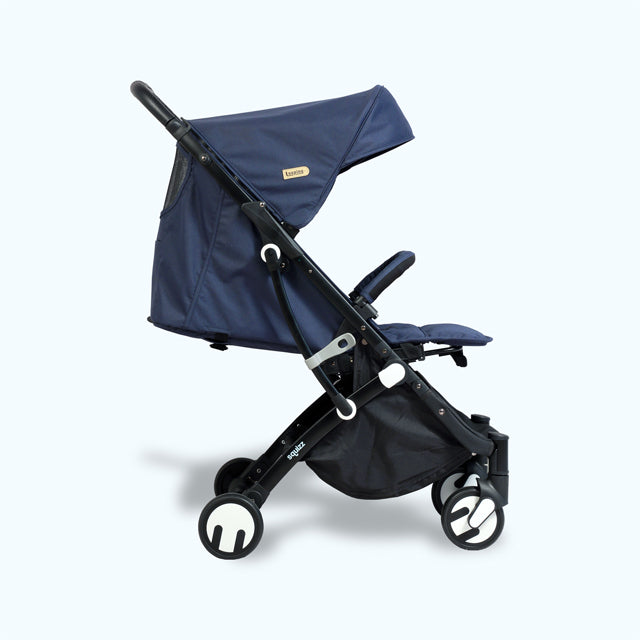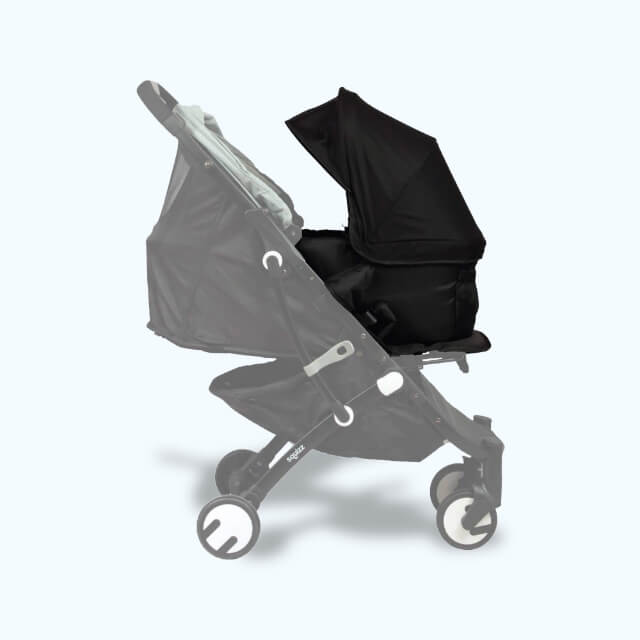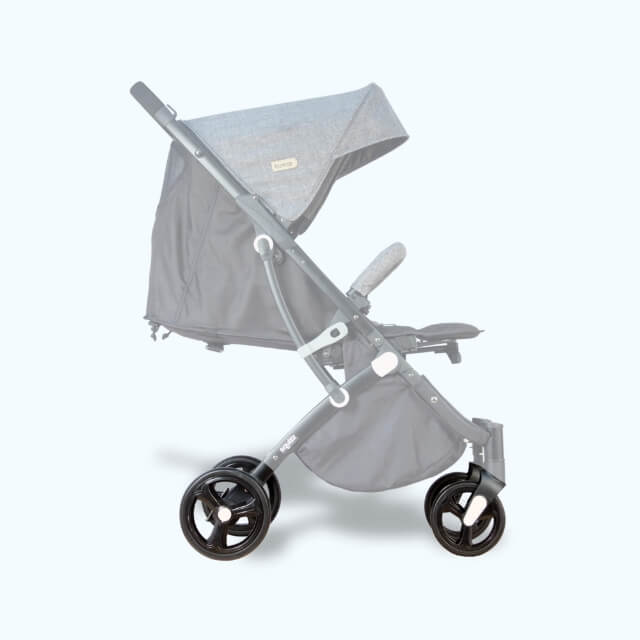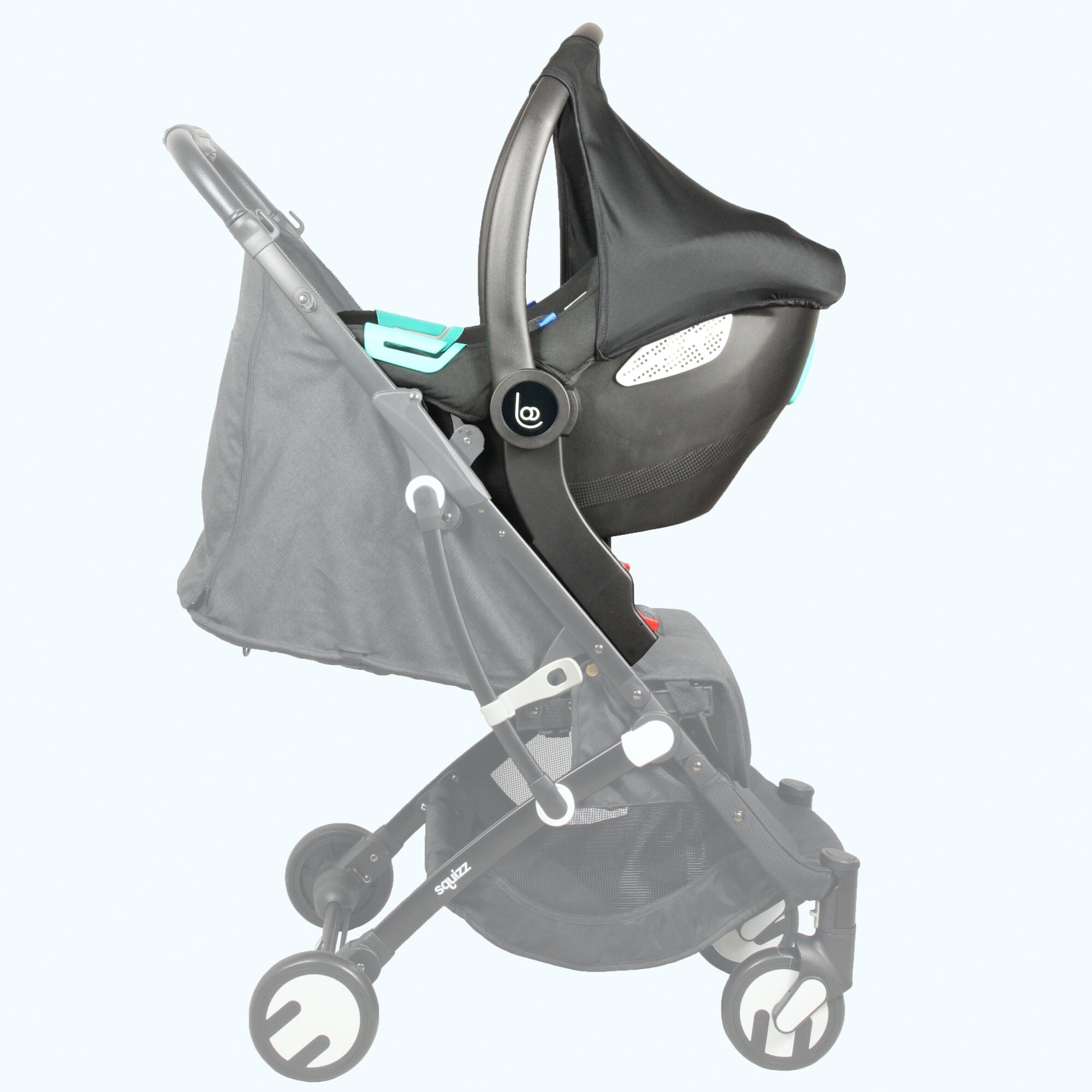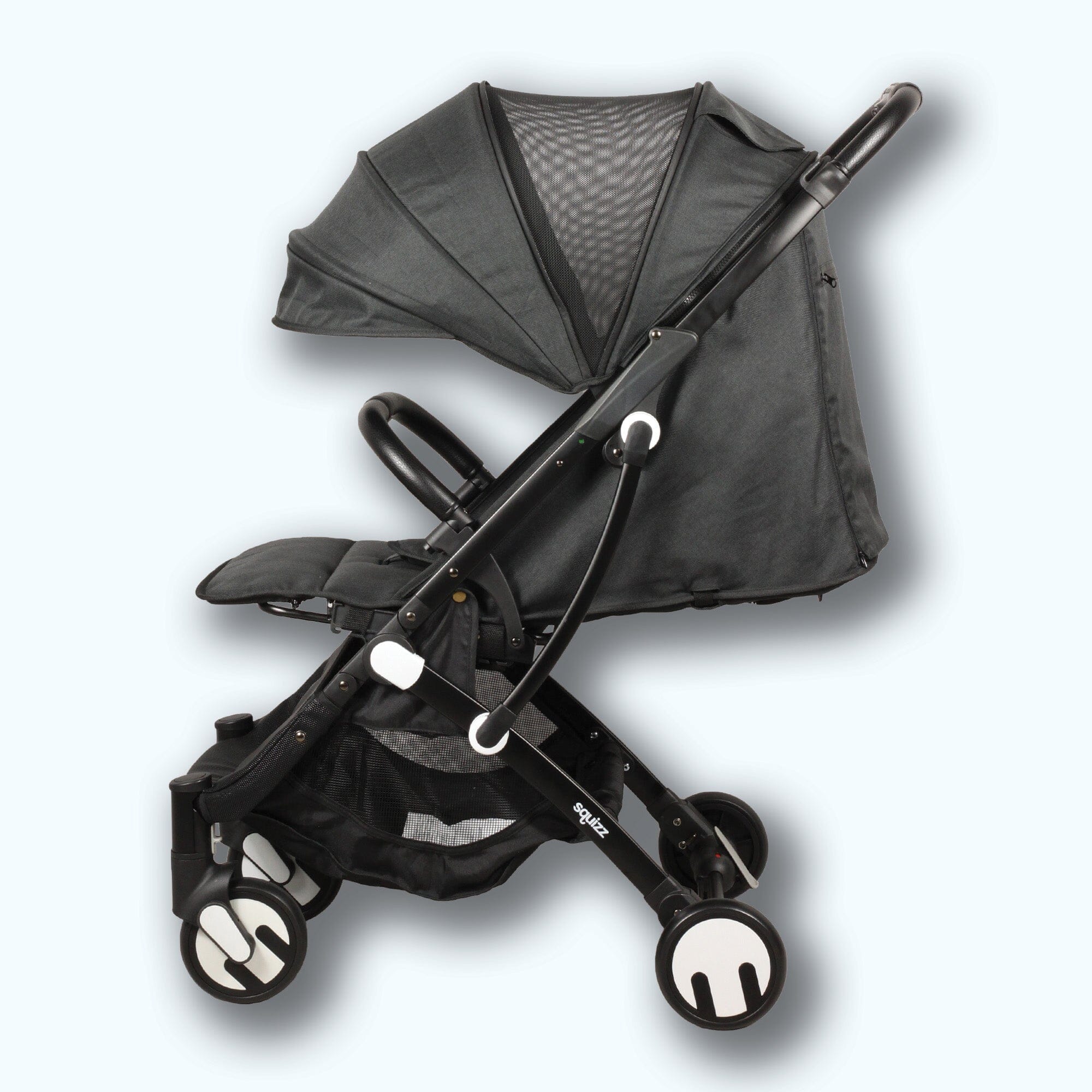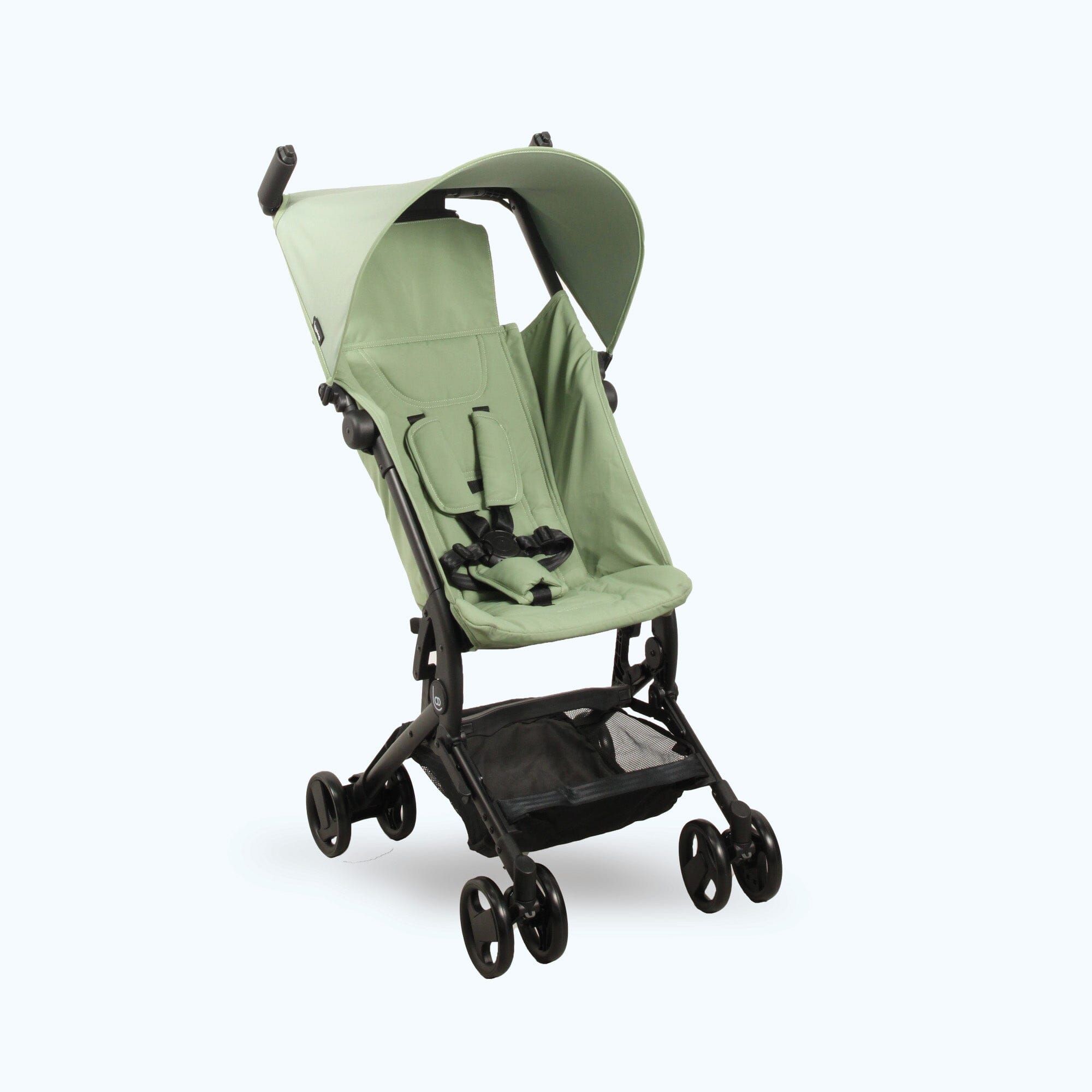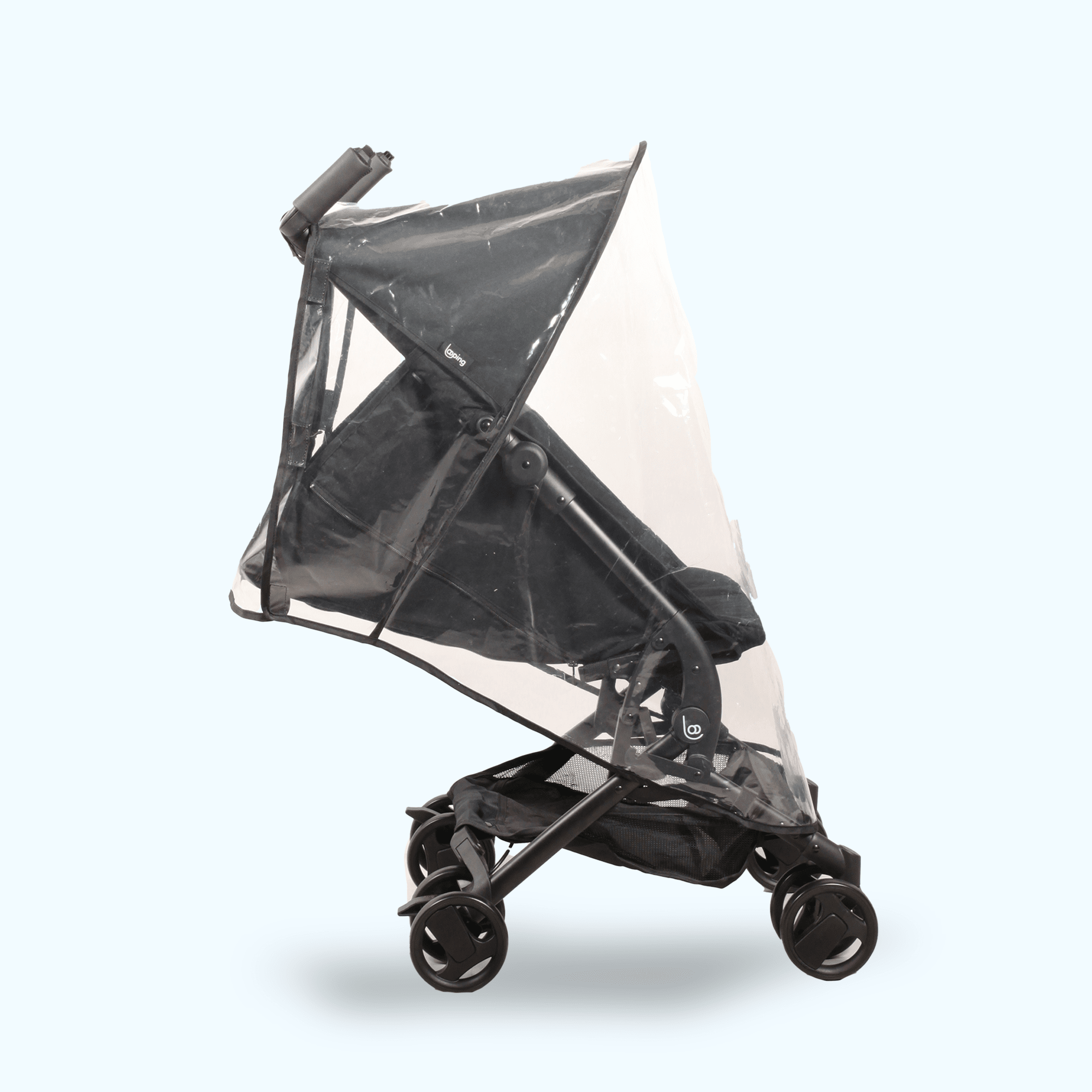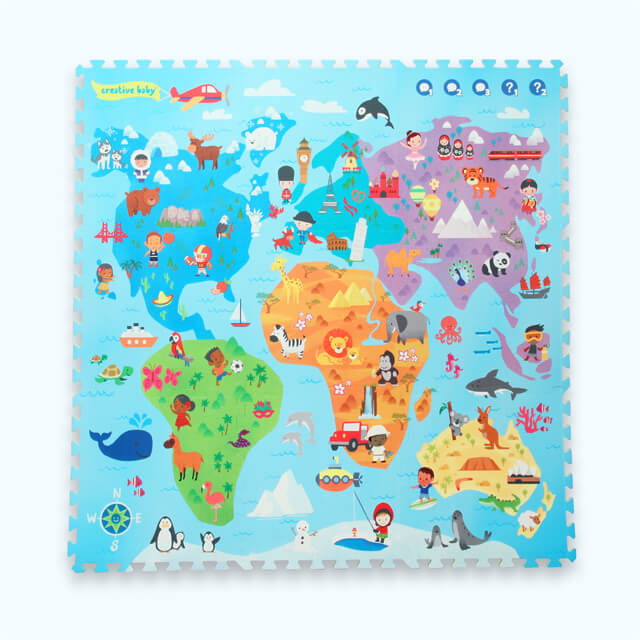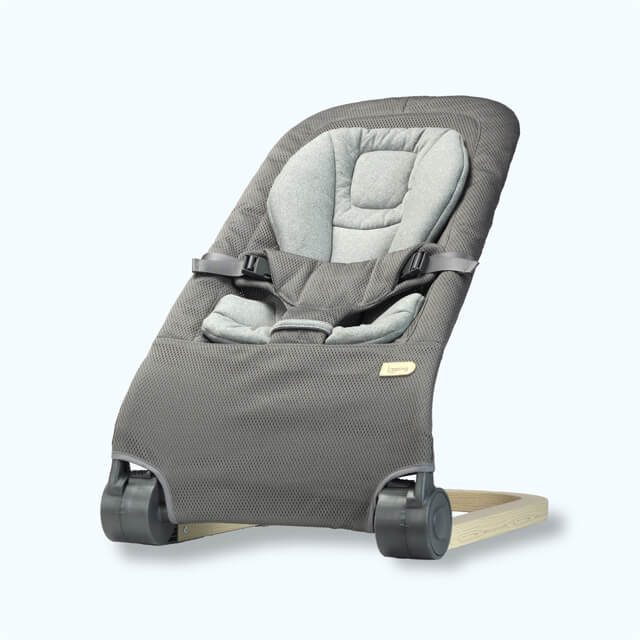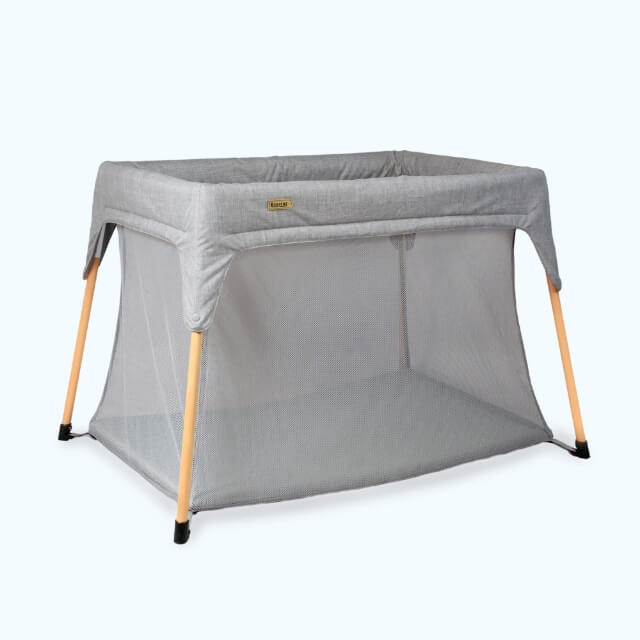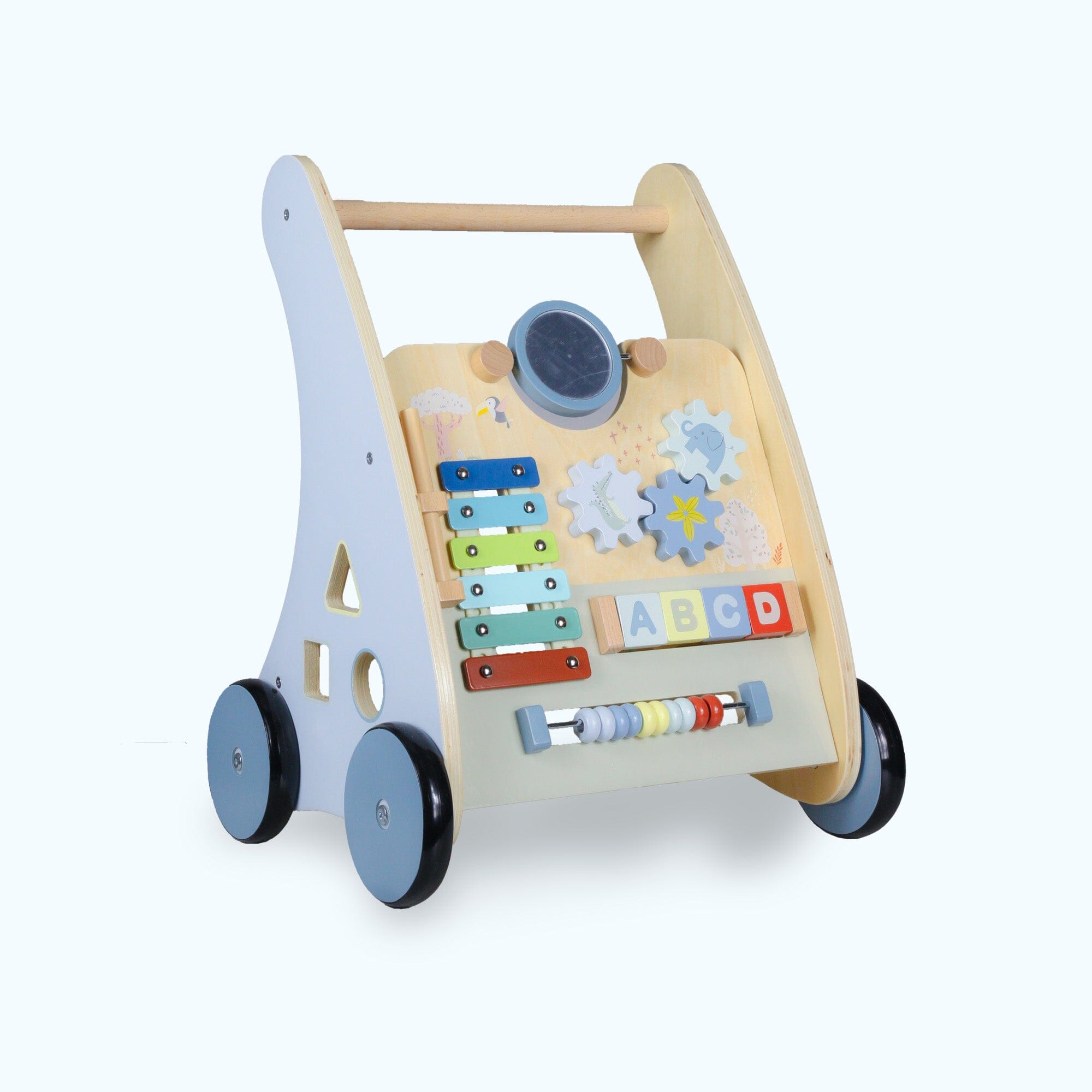You know, baby is a very fragile being. As a parent, we would like to take care of him as best as possible and thus be aware of the potential problems he could encounter during his first weeks of life. The Looping team likes to make your life easy and therefore offer you products adapted to the life of parents, but we also want to talk to you about this type of common inconvenience among babies so that you can best anticipate all of this, and therefore avoid some unnecessary worries. No matter what problems your baby may encounter, they won't make you a bad parent. This is common among babies. Most of the symptoms of these different problems are very similar. You will have to stay attentive ;)
We were fortunate to be able to write this article with the help of Brigitte Tack, an ermatologist specializing in dermatological lasers, currently retired, who was able to fully enrich our content through her profession. Here's what you need to know about common infant skin conditions.
Neonatal acne and infantile acne
Neonatal acne affects children in the first weeks of life. Childhood acne affects children beyond a few months or years of life. About 40% of babies develop neonatal acne. This usually appears at 2 to 3 weeks of age and can often last until 4 to 6 months of age. These kinds of pustular lesions and micro-cysts located on the forehead, cheeks and chin are probably caused by your hormones, which are still circulating in your little one's blood and which stimulate the baby's sebaceous glands, causing the appearance small red bumps.
The good news is that even though they may not be pretty, these spots don't bother baby and won't leave permanent scars even if you don't take care of them. Do not squeeze pimples, rub them with soap, slather baby with lotions, or treat your newborn's acne in any way. Simply wash it with water once or twice a day, pat it dry gently, as you would do every day if it had no skin problem, and never use pimple creams intended to adults.

Seborrhea of the head, also called “cap” or “cradle cap”
Do you see yellowish crusts, bright red bumps or/and dandruff on your baby's head? These are cradle cap, seborrheic dermatitis of the scalp (called dandruff in older children and adults), which can appear in infants during the first three months and can persist for up to a year. This can cause your scalp to itch. The problem comes from excess sebum produced by the sebaceous glands, which trap old skin cells on the roots of its little head.
But then what to do? Not much since cradle cap is harmless and not contagious. Seborrhea of the head can be prevented by a little shampoo when bathing. Treat to prevent the scabs from spreading by massaging the scalp with petroleum jelly or mineral oil to loosen dead skin, leave for a few hours, then shampoo thoroughly (mild) to remove the scabs. flakes and excess oil. Consult your pediatrician if this persists (after more than 3 to 4 weeks). He or she will be able to recommend a special shampoo. Also check if your baby suffers from lesions on other parts of the body such as on the face, on the folds of the armpits, on the neck or on the back of the ears and especially the buttocks.

Atopic eczema, or atopic dermatitis
Do not be afraid ! Most baby skin conditions bother you more than they bother your little one. But here is the exception to the rule: infant eczema (also called atopic dermatitis). It is a chronic inflammatory skin disease which manifests itself by dry skin, from the age of three months. In general, atopic eczema is found on the scalp, on the buttocks or on the “bulging” areas of the face and limbs. Later, we can find them in other areas, “in hollows” like the folds , for example on the neck, behind the knees or at the level of the folds of the elbows. Symptoms include redness and itching, blisters, oozing and crusting, which is uncomfortable for the baby.
To alleviate this rather painful discomfort, apply a moisturizing milk or cream after taking a bath (short and not too hot) after drying it off. If the situation does not improve, consult your dermatologist, who will suggest an appropriate soap or cleansing oil, a specific moisturizing cream for atopic skin to apply to the body (or even another for the face) and a cream based on hydrocortisone if necessary. You should not be afraid of cortisone, which is the only medication that will be able to stop a more serious flare-up. In general, 50% of atopic dermatitis disappears before 5 years. Some persist into adulthood. Atopic dermatitis falls within the framework of atopy, which is genetic in nature. It is found in family members, as well as asthma and hay fever, or simply dry skin.

Impetigo
Blisters and scabs that appear in your child's diaper area are most often impetigo. This skin disease is common in children aged 2 to 5 years. This common skin infection, which can also spread to other parts of the body or face, occurs when one of two types of bacteria (streptococcus or staphylococcus) enters the baby's body through a break in the skin . Impetigo presents in two forms:
- Bullous : fluid-filled blisters that burst and leave a thin yellow-brown crust. This form represents around 30% of cases. As a general rule, there is no fever or pain but it is advisable to consult without delay to avoid excessive spread and the risk of secondary infection.
- Crusty (non-bullous). The latter is the most common form (approximately 70% of cases). It is characterized by pustules and the formation of thick yellow crusts surrounded by redness. These lesions are not painful but can sometimes cause itching , but this remains superficial and therefore does not cause a fever. Very contagious , they cause small epidemics in nurseries and schools, mainly during the summer, probably due to the wearing of short-sleeved shirts or shorts, which promote skin contact with other people and small children. traumatic lesions of the exposed parts.
In general, situations favoring impetigo are the presence of lesions on the skin, lack of hygiene, the presence of impetigo at school, nasal infections, diarrhea or even the use of certain medications which treat certain chronic illnesses. For both types of impetigo: keeping the skin in general and the baby diaper area clean and dry will be your best line of defense. Your doctor will be able to confirm the diagnosis and prescribe a local treatment based on an antiseptic, a local application of an antibiotic and especially an oral antibiotic, to avoid kidney complications.

Dry skin
Many adults suffer from rough, tight skin, and this can be the case for a baby too. Your plan of attack against dry skin: Moisturize, hydrate, hydrate! As for atopic dermatitis , apply a moisturizing milk after bathing - but avoid soap, even soap. Prefer a syndet (bar without soap) and avoid long bathing sessions. Never put bath salts or foaming gels in bath water. The bath should be given at a temperature of 37°C or even 35°C if your child has very dry skin. After bathing, pat dry with a towel. We avoid rubbing it! Keep your baby's room not too overheated, and dress him in 100% cotton clothing/underwear. Avoid letting her skin come into direct contact with wool or synthetic materials (like tights for little girls, even synthetic ones). Wash his clothes without using fabric softeners or using too much detergent. If dry patches begin to expand, crack, or become painfully itchy, see your dermatologist who can recommend special creams, soaps, or shampoos.

Heat rash
This rash appears as tiny red spots on the face, neck, armpits, and upper torso. These are small skin irritations. Typically, this occurs when sweat builds up due to blocked sweat gland ducts. Although heat rashes usually go away on their own within a week, they can be itchy and uncomfortable for your baby. One way to treat it is to take a cool bath, but avoid powders which can further block the flow of sweat. Make sure you stay in a cool environment and wear loose clothing to avoid sweating. Make him drink enough. Call your doctor if pustules, increased swelling, or redness develop.

Sun burn
The sun is harmful to baby's skin, which is not yet able to protect itself from it. Sunburn causes red, swollen patches that may blister or peel if the sunburn is severe. We especially fear heatstroke, with fever. Prevention is your best friend. Ban on sun exposure before the age of 3: always place in the shade. Choose your wardrobe carefully (opt for long-sleeved shirts and lightweight hats with brims and flaps for older babies). After 3 years, you should apply anti-sun cream based on mineral screens, often and generously, and reapply regularly, especially after swimming on the beach. Mineral screens have the advantage over chemical screens of not degrading in the sun. In addition, they give a white appearance to the cream, which makes it easy to monitor. When you see the layer of cream fading, it means you need to add more! Of course, you should always accompany this protection with a t-shirt, wide-brimmed hats and sunglasses.
If your baby has burns, apply cold compresses for 15 minutes, three or four times a day, and apply an anti-sunburn spray, a gentle moisturizer, or aloe vera gel – (this herb has magical properties). Let it penetrate well and spread again. A little tip: you can put the tube of cream in the refrigerator so that it is even colder. If blisters, pain, chills, or nausea appear, call the doctor immediately.

Frostbite
Babies are particularly susceptible to frostbite, when the skin becomes very cold to the touch and white or gray-yellow in color. This condition is caused by extreme cold, which constricts blood vessels and can cut off blood supply to outer areas of the body.
The best way to prevent frostbite is to make sure the baby is well fed and properly dressed before heading out into the cold (hat, down jacket, scarf partially covering the face, tights, thick socks, fur-lined and thick-soled shoes) . If you notice signs of frostbite on his toes or fingers, immediately try to warm the colder parts against your body - open your coat or shirt and tuck baby inside, close to your skin. Do not rub the frostbite, massage it, or soak it in hot water. You will have to wait several hours to re-expose your baby to the cold once the skin has warmed up. If the skin does not return to normal within a short time, then go to the emergency room or your pediatrician immediately.

Congenital nevus
From its full name, congenital melanocytic nevus is a mole present from the birth of the baby. It is rather rare. His presence must be noted on the health record. Most often, a nevus appears after birth. Nevus can affect all skin colors and all parts of the body. Size may vary from small to extra large. Large moles (giant pigmented nevi) are extremely rare and must be monitored because they present a risk of becoming malignant. If your baby is born with one of these moles, annual dermatological monitoring is essential. He may recommend that you remove large moles (after 6 months of age) or suspicious moles to minimize the risk of cancer.

Diaper rash
Your baby's bottom is red, sore and hot. It's a diaper rash, a skin irritation that's usually caused by this tricky trifecta: too much moisture, too little air, and irritation from diapers, wipes, or soap. . Diaper rash lasts 2 to 4 days, sometimes longer (in fact as long as the cause lasts) and it appears during the first 15 months of life.
Your best defense is to keep his diaper as clean and dry as possible by changing it frequently. When changing diapers, gently wash your baby's bottom with a washcloth and lukewarm water with a drop of olive oil. Avoid soap . Avoid regular use of disposable wet wipes (they contain alcohol and especially allergenic products). Talcum powder can also irritate your baby's skin and lungs. If a rash occurs, increase the time baby's bottom is exposed to at least 10 minutes before putting on a new diaper. Ditch the wipes, and use a cleansing oil during the bath. If you don't see improvement within two or three days, or your child has a fever, blisters, or boils, contact your dermatologist. Before buying a cleaning wipe (very useful when traveling and only when traveling) always check that it does not contain methylisothiazolinone, a very allergenic agent.
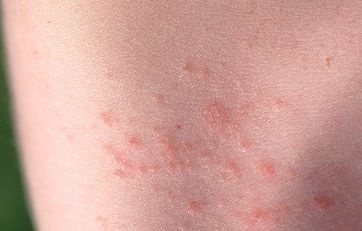
Still in the area of baby's skin problems, here are the different spots that can appear on their skin...
Red spots - rare, they appear shortly after birth.
- Some are flat and light red and fade over the years ( pale with age or hidden by hair), although they do not disappear completely. Most often, they are found on the neck and forehead. This is angioma simplex, also called “ angiomaflammeus ” or “the stork’s bite”. They can be made up or lasered as adults if they remain visible.
- Others are flat and rise quickly, thicken, and turn darker red. This is a tuberous angioma, also called "strawberry" or " infantile hemangioma" . It has a growth phase lasting 6 months, then stabilizes, leaving around 7 to 8 years a more or less significant and annoying mark depending on the location, which can possibly be treated by laser or surgery. These hemangiomas must be monitored because they can interfere with the functioning of neighboring organs. For example, if the hemangioma is near the eye, it may affect vision. You must then consult a dermatologist who will very quickly initiate treatment with propanolol.
- The flat angioma , strictly speaking, is most often present at birth, sometimes very barely visible. It rushes more or less quickly. It can be located anywhere on the body or face. They can be treated by laser from the first weeks of life, when they are on the face and will constitute a relational handicap at school. The sooner they are treated with laser, the better they will disappear. No treatment other than laser is currently recommended. This treatment is done by a dermatologist specializing in laser.



Coffee and milk stains
Generally flat and irregularly shaped, café-au-lait spots are permanent stains that vary in color from beige to light brown and do not darken in the sun. They can appear anywhere on your baby's body, either at birth or during the first few years of life, and increase in size and/or quantity as your child grows. They are harmless , but should be the subject of a consultation with the pediatrician if there are more than 6 of them. They can then correspond to a genetic disease, which can (sometimes) already exist in the family.

Mongolian spots or Mongoloid spots
Most common in babies of African, Asian, Indian and Mediterranean descent, these gray-blue spots are caused by simple variations in skin pigmentation and usually all appear and disappear within the first year. They may look like a big bruise, but they don't hurt at all. Ranging from the size of a pinhead to 6 inches in diameter (or more), Mongolian spots usually appear on the baby's back, buttocks, or legs. There is nothing special to do except wait for them to disappear.

To conclude, there are many skin diseases that can affect our babies. But what is important to remember is that they are very often harmless, and go away over time. Adopting the right actions and consulting a doctor if the problem worsens remains the best option.
Today, doctors advise applying as few things as possible to the skin of babies and children in general, due to the high permeability of the skin barrier and the significant number of allergenic molecules contained in cosmetic products, despite the organic designation. The most natural products possible are strongly recommended for caring for babies. If you are a fan of natural products and you care a lot about the well-being of your family, I invite you to go to this link . Lots of unsuspected products or medications that contain chemicals that can be harmful.
Sources
Brigitte Tack, dermatologist, specialized in dermatological lasers, currently retired.
https://www.doctissimo.fr/html/sante/bebe/sa_1615_impetigo.htm
https://www.whattoexpect.com/first-year/health-and-safety/baby-skin-issues-conditions/
https://www.pediatre-online.fr/dermatologie/lacne-nouveau-ne-nourrisson-faire/
https://www.news-medical.net/health/What-is-diaper-rash-(nappy-rash)-(French).aspx
https://naitreetgrandir.com/fr/sante/naitre-grandir-sante-enfant-peau-seche/
https://www.magicmaman.com/,5-conseils-contre-la-peau-seche-de-bebe,2701343,3442933.asp
https://www.passionsante.be/index.cfm?fuseaction=art&art_id=23450
https://www.devenirgrand.com/erytheme-fessier/
https://mariefortier.com/postnatal/le-naevus-simplex/
http://trucsdemamaman.fr/tache-mongolique
